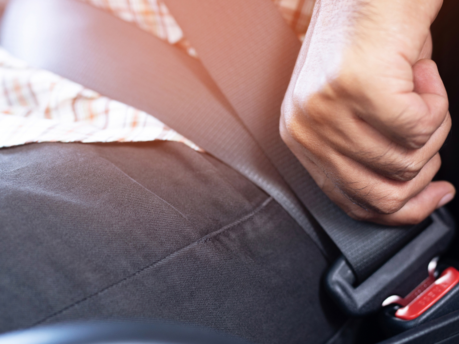Seat belt fines explained
Find out what the laws are around wearing a seatbelt
When we get into our cars, reaching for the seatbelt is an automatic action. We all know that we should be wearing them, but what exactly does the law say, and are there situations in which you’re exempt from wearing a seatbelt? This is what we’ll be investigating in this article.
Why do you need to wear a seatbelt?
In the event of an accident, your seat belt prevents you from essentially being ejected from your seat on impact, which would be very likely to prove fatal. Road casualty statistics showed that in 2020 23% of car occupant fatalities were down to a failure to wear a seat belt.
Seat belts have been a compulsory feature in all new cars manufactured since 1965, and the wearing of them became law in 1983.
What is the seatbelt law for adults in the UK?
By law, all adults and children over 14 should wear a seat belt when in a car, van, or any other commercial vehicle where a seatbelt is available.
What is the seatbelt law for adults in the UK?
Children under 14 must be suitably restrained in accordance with their age and/or height as follows…
Children under 3
Children under 3 must be in an appropriate car seat, regardless of whether they are travelling in the front or rear of the vehicle. The only exception would be if they are travelling in a taxi where a child seat isn’t available.
Children over 3 and up to 12 years of age, or 135cm in height, whichever comes first
In the front seat, children in this category must be in a suitable child restraint in the front or rear seat of a vehicle, unless they’re travelling in the rear seat of a taxi, two existing child seats prevent the fitting of a third, or the journey is short, unexpected and wholly necessary.
Children over 12 (or 135 in height) but under 14
A child restraint or seat belt must be worn in both the front and rear seats.
Who is responsible for ensuring everyone wears their seatbelt in a vehicle?
In the eyes of the law, the driver is responsible for ensuring that they themselves have their seatbelt on and that anyone in the vehicle under the age of 14 has their seatbelt on too. Passengers over 14 are responsible for wearing their own seat belts.
What’s the fine for not wearing a seatbelt?
If you’re caught driving without wearing a seat belt, or driving a car in which children under 14 are not wearing a seatbelt, you could find yourself with a £500 fine to pay and three points on your licence.
Passengers over 14 are liable to pay a £500 fine if found travelling without wearing a seat belt, and despite not being in the driver's seat, two penalty points could be put on your licence.
What are the exemptions for wearing a seatbelt?
You may be exempt from wearing a seat belt on medical grounds, in which case you should be issued an exemption certificate by your doctor. You need to keep it with you when you’re driving, as the police may ask you to produce it as proof that your seat belt hasn’t been illegally neglected.
There are some select circumstances in which those who do not have a medical exemption from wearing a seat belt do not have to wear one. These include:
- If you’re carrying out deliveries in a goods vehicle with no more than 50 metres between stops
- You’re reversing, or supervising a learner driver who is reversing
- Being a licenced taxi driver who is carrying passengers, or ‘plying for hire.’
Those who are pregnant are still required by law to wear a seat belt unless exempt with a medical certificate.

